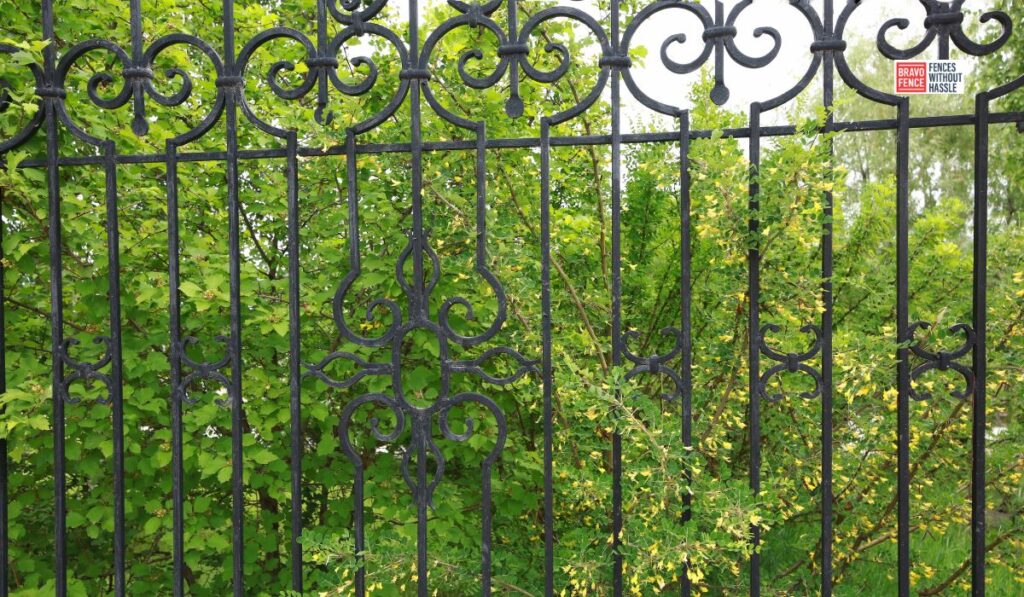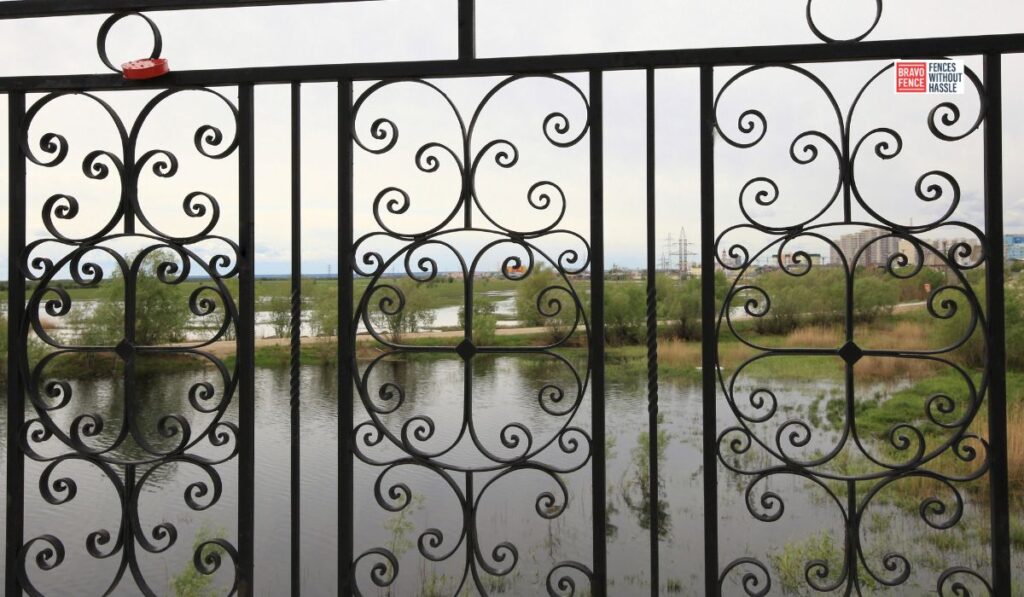When it comes to fencing solutions for residential or commercial properties, durability, security, and aesthetics are paramount.
Steel fences have emerged as a popular choice due to their strength, longevity, and versatility.
Installing a steel fence may seem like a daunting task, but with the right approach and guidance, it can be a straightforward and rewarding endeavor.
In this article, we’ll delve into the process of steel fence installation, offering insights and tips to make the process easy and efficient.
Understanding Steel Fencing
Steel fencing offers numerous advantages over other materials, such as wood or vinyl. It provides:
- Unparalleled strength and security.
- Making it ideal for perimeter fencing.
- Boundary demarcation.
- Even for decorative purposes.
Steel fences are available in various styles, including ornamental designs, modern, sleek profiles, and traditional picket styles.
This allows homeowners and businesses to choose a style that suits their aesthetic preferences and security needs.
Preparation
Thorough preparation is critical to ensuring a successful installation.
Begin by conducting a comprehensive survey of the installation area, marking boundaries, and identifying any potential obstacles, such as underground utilities or uneven terrain.
Obtain any necessary permits or approvals required by local authorities before commencing work.
Materials and Tools
Gather all the necessary materials and tools required for the installation.
This typically includes steel fence panels, posts, concrete mix for post foundations, fasteners, post caps, gate hardware, and tools such as a level, tape measure, post hole digger, and power drill.

Ensure that all materials are of high quality and suitable for outdoor use to withstand the elements and provide long-lasting performance.
Installation Process
Layout: Begin by laying out the fence line using stakes and string, ensuring straight lines and proper alignment.
Digging Post Holes: Use a post-hole digger to excavate holes for the fence posts.
The depth and diameter of the holes will depend on the specific requirements of your fence design and local building codes.
Install Posts: Set the steel fence posts in the prepared holes, ensuring they are plumb and securely anchored.
Use a concrete mix to fill the holes and provide stability.
Attach Panels: Once the posts are set and the concrete has cured, attach the steel fence panels to the posts using appropriate fasteners.
Ensure that panels are level and properly aligned.
Install Gates: If your fence design includes gates, install them according to manufacturer instructions, ensuring proper alignment and functionality.
Finishing Touches: Install post caps for added aesthetics and weather protection.
Inspect the entire fence line for any imperfections or loose fasteners, making any necessary adjustments or repairs.
Maintenance
To ensure the longevity and performance of your steel fence, regular maintenance is essential.
Inspect the wall periodically for signs of damage, rust, or loose components.
Clean the fence as needed with mild detergent and water, and touch up any areas of rust or chipped paint with appropriate coatings.
Additionally, trim vegetation around the fence line to prevent it from impeding the integrity of the structure.
Choosing the Right Steel Fence
Before diving into the installation process, it’s essential to select the correct type of steel fence for your specific needs and preferences.
Consider factors such as the level of security required, desired aesthetic appeal, maintenance considerations, and budget constraints.
Steel fences come in various grades and finishes, each offering unique benefits and drawbacks.
Galvanized steel, for example, is resistant to rust and corrosion, making it suitable for outdoor applications, while powder-coated steel offers added durability and color options.
Site Preparation
In addition to marking boundaries and identifying potential obstacles, site preparation may also involve grading the terrain to ensure proper drainage and a level installation surface.
Clearing vegetation and debris from the installation area will also facilitate smooth progress during the installation process and prevent interference with the fence structure over time.
Installation Techniques
While the basic steps of steel fence installation remain consistent, there are variations in techniques and approaches depending on the specific design of the fence and site conditions.
For example, installing sloped panels on uneven terrain may require additional adjustments to ensure proper alignment and stability.
Similarly, incorporating corner posts, end posts, and gate posts requires careful planning to maintain structural integrity and functionality.
Safety Considerations
Safety should always be a top priority during the installation process.
Use appropriate personal protective equipment (PPE) such as gloves, safety glasses, and sturdy footwear to protect against injury.
Exercise caution when handling heavy steel components and power tools, and follow manufacturer guidelines and best practices to minimize risks of accidents or mishaps.
Customization Options
One of the key advantages of steel fencing is its versatility and customization options.
Beyond standard panel designs, steel fences can be customized with decorative elements such as scrolls, finials, and post caps to add personality and flair to your property.
Additionally, consider incorporating features such as integrated lighting, security cameras, or access control systems for added functionality and convenience.
Environmental Considerations
When selecting materials for your steel fence, consider the environmental impact and sustainability of your choices.

Opt for steel sourced from reputable suppliers with environmentally responsible practices, and explore options for recycled or eco-friendly coatings and finishes.
Additionally, consider landscaping strategies to enhance the ecological value of your property and minimize the environmental footprint of your fence installation.
Community Engagement
Depending on your location and neighborhood regulations, it may be beneficial to engage with your community or homeowners’ association (HOA) early in the planning process to ensure compliance with local guidelines and address any concerns or considerations.
Open communication and collaboration can help streamline the installation process and foster positive relationships with neighbors and stakeholders.
Conclusion
Steel fence installation can be a straightforward and rewarding process when approached with careful planning and attention to detail.
By following the steps outlined in this article and investing in quality materials and craftsmanship, you can build a steel fence that not only enhances the security and aesthetics of your property but also stands the test of time.
With strength as its foundation, a steel fence provides peace of mind and lasting value for years to come.
Ready to start your steel fence installation project? Contact us at Bravo Fence Company today to schedule a consultation with our expert team.
FAQs
What are the advantages of steel fencing over other materials?
Steel fencing offers unparalleled strength, durability, and security compared to materials like wood or vinyl. It provides a wide range of styles for various aesthetic preferences and security needs.
What preparation is required before installing a steel fence?
Thorough preparation involves:
- Surveying the installation area.
- Marking boundaries.
- Identifying obstacles like underground utilities.
- Obtaining necessary permits.
- Ensuring all materials and tools are ready.
What materials and tools are needed for steel fence installation?
Materials include steel fence panels, posts, concrete mix, fasteners, gate hardware, etc. Tools such as a level, tape measure, post-hole digger, and power drill are essential.
Can you outline the basic installation process for a steel fence?
The process involves:
- Layout.
- Digging post holes.
- Installing posts with concrete.
- Attaching panels.
- Installing gates.
- Adding post caps.
- Conducting a final inspection for adjustments or repairs.
How should a steel fence be maintained?
Regular maintenance includes:
- Inspecting for damage or rust.
- Cleaning with mild detergent and water.
- Touching up rust or chipped paint.
- Trimming vegetation around the fence line.
What factors should be considered when choosing a steel fence?
Consider security needs, aesthetic preferences, maintenance requirements, and budget constraints—different steel grades and finishes offer unique benefits.
What site preparation is necessary before installing a steel fence?
Besides marking boundaries and identifying obstacles, grading the terrain for drainage and clearing vegetation and debris from the installation area are essential.
Are there specific installation techniques for steel fences?
Techniques may vary based on fence design and site conditions, such as adjusting for sloped panels on uneven terrain or incorporating different types of posts.
What safety precautions should be taken during installation?
To minimize risks, wear appropriate personal protective equipment, exercise caution when handling heavy components and power tools, and follow manufacturer guidelines.
Can steel fences be customized?
Yes, steel fences offer various customization options, including decorative elements like scrolls and finials, as well as features like integrated lighting or security systems.
How can environmental considerations be incorporated into steel fence installation?
Choose steel from environmentally responsible suppliers, explore recycled or eco-friendly coatings, and consider landscaping strategies to minimize environmental impact.
Is community engagement important for steel fence installation?
Engaging with the community or homeowners’ association early in the process can ensure compliance with local regulations and foster positive relationships with neighbors.
Can steel fences withstand harsh weather conditions?
Yes, steel fences are known for their resilience against various weather elements, making them suitable for long-term outdoor use in diverse climates.
How long does it typically take to install a steel fence?
The installation time can vary depending on factors such as the size of the fence, terrain conditions, and the complexity of the design. However, a standard installation often takes a few days to complete.
Are steel fences prone to rust or corrosion?
While steel is susceptible to rust and corrosion over time, proper maintenance and the use of galvanized or powder-coated steel can significantly mitigate these issues, prolonging the fence’s lifespan.


